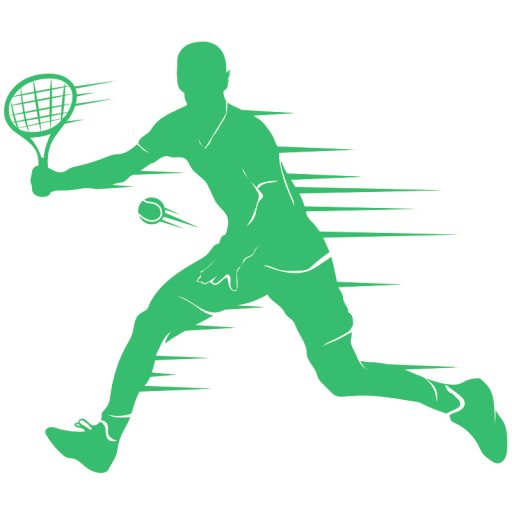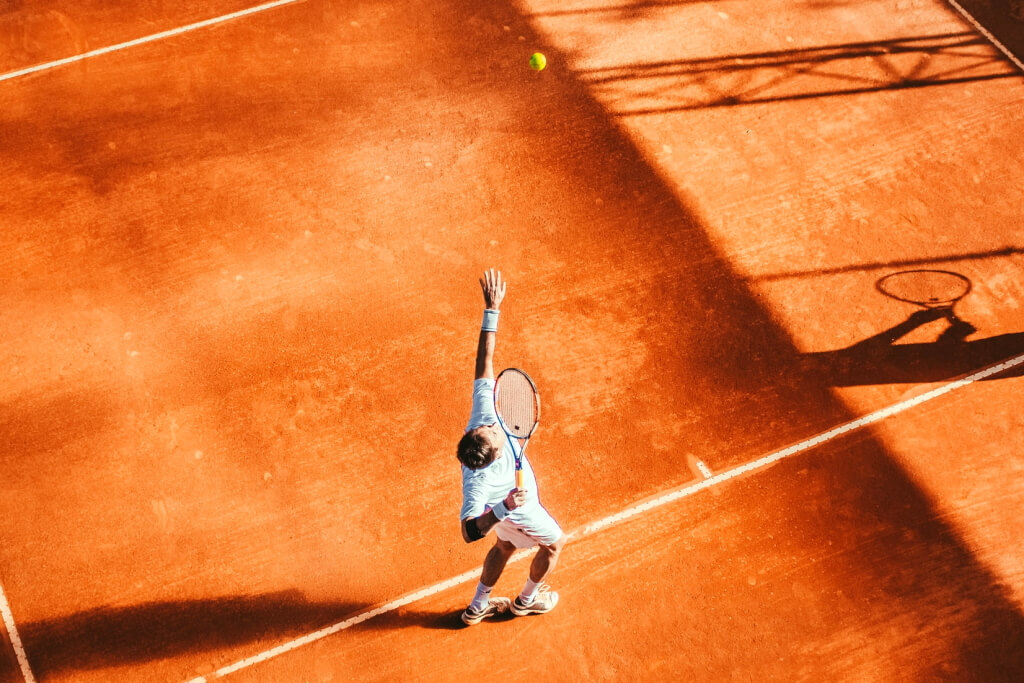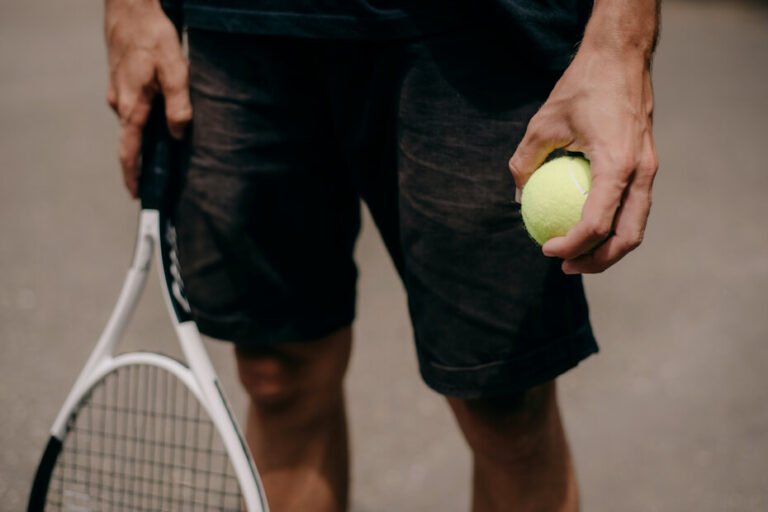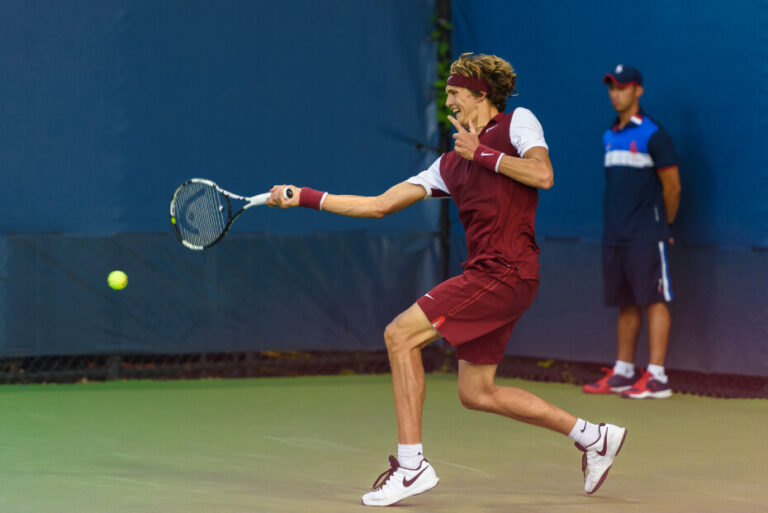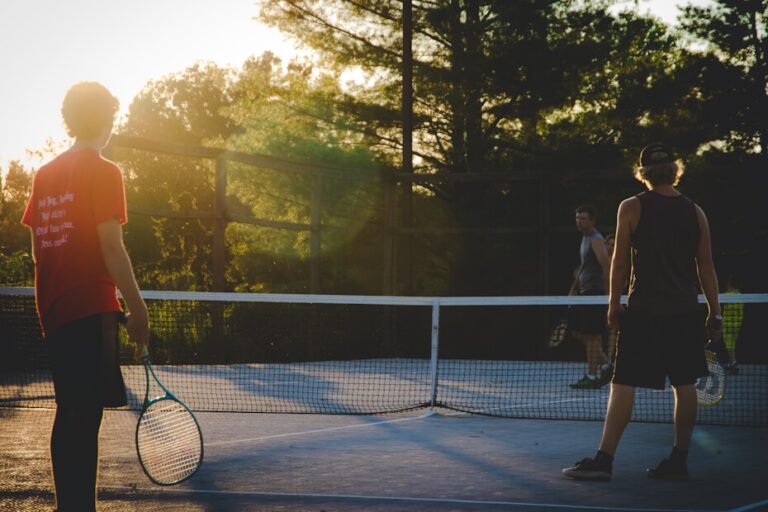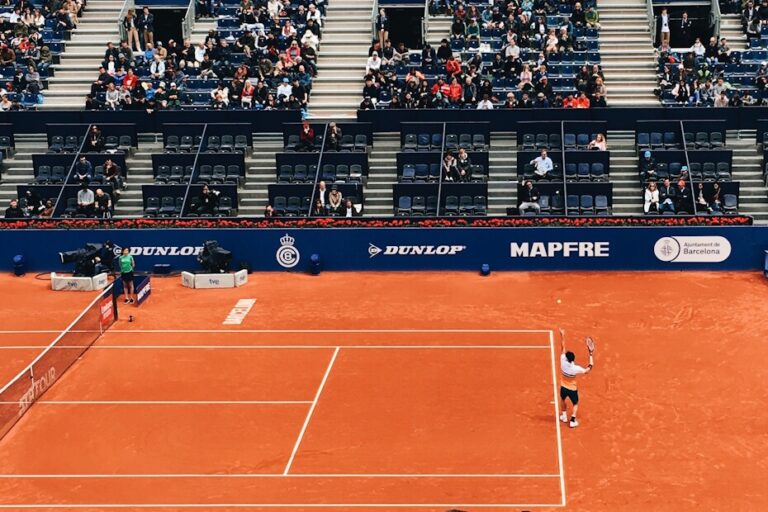We all know how popular tennis is, and we all know how many viewers big tournaments such as Wimbledon, the French Open, The US Open, and the Australian Open generate each time they’re broadcast.
Watching tennis is all well and good, but tennis is also a fantastic sport to play. Not only does tennis work on your cardiovascular fitness and coordination, but it also helps you to learn a new skill and enjoy yourself in the process.
If you are a tennis player, however, you’ll also know how difficult it can be to improve your game. With so many aspects to focus on, becoming a great all-around tennis player is much easier said than done. A lot of tennis players find themselves struggling with their serves, and if this applies to you, you’ve come to the right place.
A tennis serve requires power, speed, and accuracy all in one, and that is no easy feat. While we can’t guarantee that following these tips will give you a 130+mph serve, we can guarantee that they will give you much better tennis serve in general.
Here’s a look at seven tips to improve your tennis serve.
1. Master Your Stance
When serving, the first thing you need to consider before you even think about bouncing that tennis ball and throwing it up into the air is your stance.
During a tennis serve there are basically two different ways for players to stand. These are:
- Platform stance
- Pinpoint stance
Though similar, there are a few basic fundamental differences between each stance, so let’s look at each one in more detail.
Platform Stance
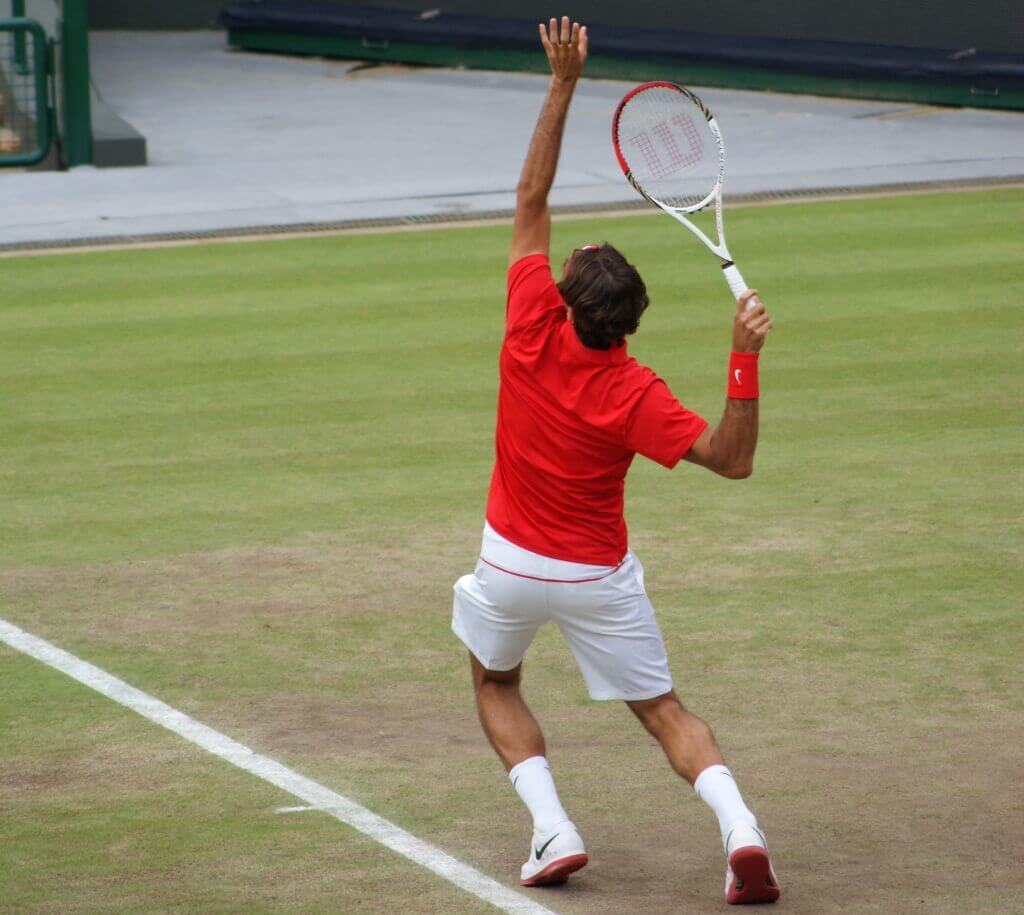
The platform stance is arguably the most common stance taken when serving in tennis. Here, the player performing the serve will begin with both of their feet apart and will then jump up into the air on both feet.
Here, the majority of power generated will be on the front foot. The player’s leading foot needs to be positioned at a 45-degree angle to the baseline. They should also ensure that the back foot is parallel to the baseline, with the toes of the backfoot positioned close to the heel of the front foot.
Pinpoint Stance
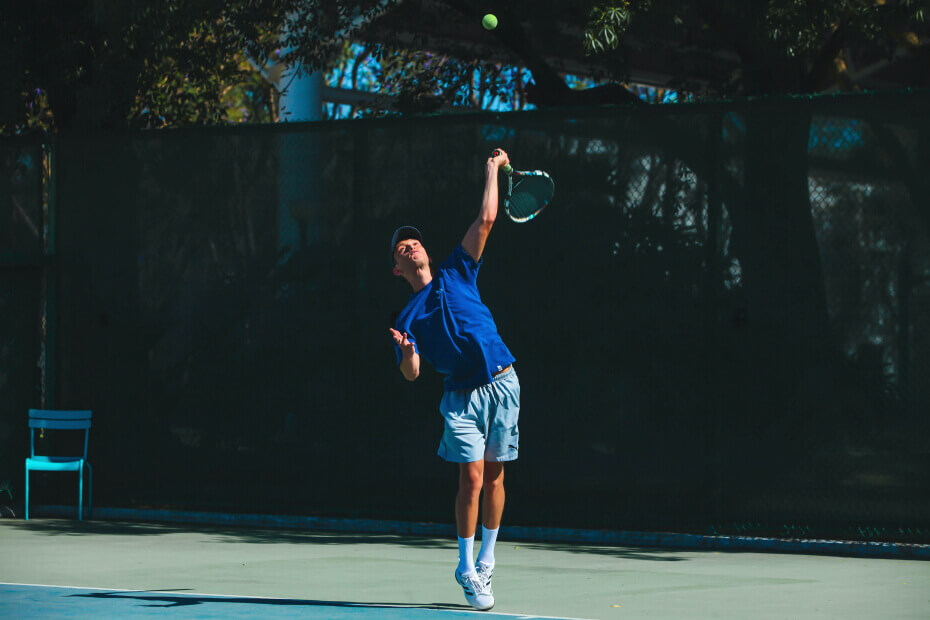
The pinpoint stance is a little trickier to perform if you have thicker legs or are perhaps not very flexible, but it is extremely effective when performing a tennis serve.
Here, the server will begin with both of their feet apart until, once entering the power position, both feet will then be brought together so that they are touching. Next, the server will jump off both feet, with the idea here being that the power generated from this jump is evenly distributed between both feet, thereby creating a more accurate and controlled serve generating more power.
2. Work on That Grip
Another very important consideration when it comes to performing a tennis serve is your grip.
One of the most common mistakes that tennis players make is using what is known as a forehand grip. This grip is very detrimental when it comes to a tennis serve, as we’ll explain now.
When using a forehand grip on the tennis racquet, players are unable to fully swing the racquet via an accurate swing path, which in turn negatively impacts the speed and the spin that the player can generate when performing their serve.
To generate more speed, and spin if required, experts recommend going with what is known as a ‘continental grip’ which requires the hand to be angled and the index finger to be spread slightly on the racquet.
This grip is useful because not only does it help the server’s hand to relax more during the serve, but it also means that the serve is likely to be more accurate too.
You can, of course, adjust your grip slightly based on what you find most comfortable for you personally. After all, different people have different arm lengths so you may find that you need to grip the racquet slightly higher or lower, depending on what works for you.
3. Control Your Racquet Speed
Another handy tip for tennis players out there looking to really nail their serve is to control the speed of their racquets.
As you swing your racquet to make contact with the tennis ball, make sure you maintain a constant and controlled swing speed throughout. One of the main reasons why tennis serves tend to go too long is due to the server slowing down the speed of their swing slightly, either just before, or just after making contact with the ball.
It will be tough at first because naturally, your instincts will tell you to swing as fast as you can when trying to generate a fast and powerful serve, but you should resist. Swinging wildly means you’re not in control of the racquet and the ball could end up anywhere as a result.
4. Work on Your Ball Toss
We’ve all seen the pros perform countless serves at major tournaments over the years, and we’ve all no doubt noticed just how high they toss the tennis ball into the air before they strike it with their racquet.
While we can’t guarantee that a perfect ball toss will have you performing serves that the Williams sisters would be envious of, we can guarantee that it will help you perform more powerful and more accurate serves that your opponent will struggle to deal with.
Most tennis players make the mistake of pulling the tennis ball back and across their bodies when they release it into the air above their heads. What you should do instead, is use your thumb to push the tennis ball to the right slightly when you release it (or to the left if you are a leftie).
This will feel odd because you’ll be worried the ball is going to fly off to the right but what actually happens, is that your fingers force the ball back to the left-hand side as the ball comes back down from being tossed.
The idea here is to let your thumb dictate the direction of the ball and do most of the work. With a good ball toss, when you do swing your racquet, you won’t be too close to the ball, so you’ll have more time to ensure that your swing is correct and to figure out where you’d like your shot to land.
5. Don’t Let the Ball Drop Too Much
While we’re still talking about tossing the ball, before we move on we need to talk about the ball height.
From the highest point of the ball toss, you should try to ensure that the ball does not drop more than 5cms (2 inches). You should jump up like we mentioned when talking about stance, making sure to strike the ball before it drops.
A lot of tennis players find that their serves are hitting the net. This is not only frustrating, but it could also cost you points. Hit the netting twice and you’ll bag yourself a ‘double fault‘ which will then gift your opponent a point. If your serves hit the net a lot, you are probably letting the ball drop too low before you hit it, so again, make sure it doesn’t fall more than 5cms.
6. Work on Your Arm Position
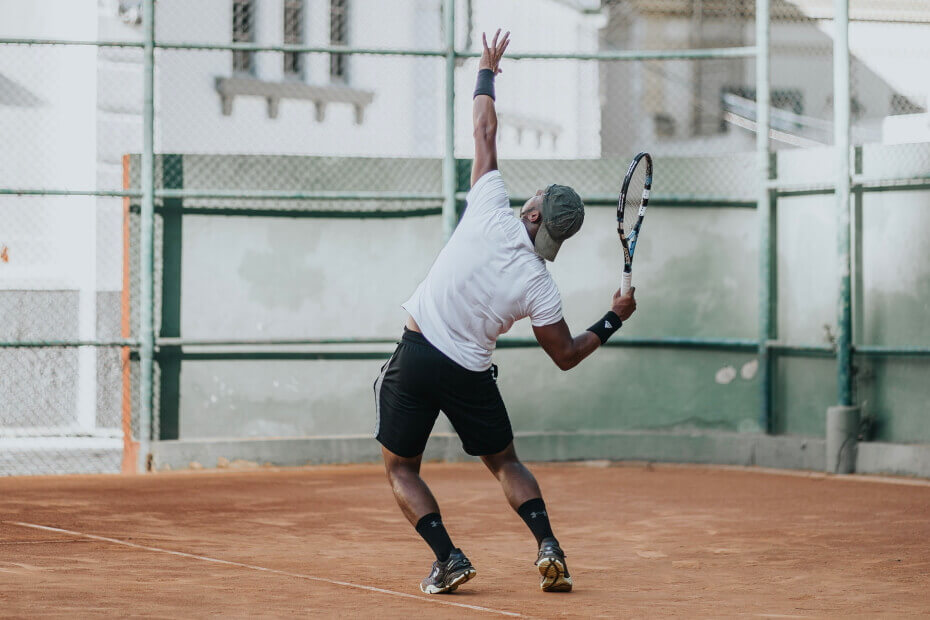
When performing a serve, arm position is so important. Get this wrong and your serve is going to be wrong, it’s that simple.
When tossing the ball into the air, make sure the tossing arm is straight but not entirely locked as you get ready to strike the ball. Before you swing up at the ball, make sure that the tossing arm is now fully extended upwards and toward the sky.
The palm of your tossing arm needs to be facing the side of the court before exploding upward toward the ball. This is important as it is needed to ensure that you hold the shoulder turn until the last second possible.
To achieve maximum extension, you also must ensure that the fingers of your tossing hand are spread slightly.
7. Choose Your Target
Performing a tennis serve is difficult as there is so much to think about. Not only do you need to decide what type of serve you’re going for, but you also need to decide the whereabouts on the court you want your ball to land.
Too many tennis players simply try to generate as much power as possible and then just whack the ball and hope for the best. This is a mistake. Instead, try to choose a target area on your opponent’s side of the court where you want the ball to land.
Most players anticipate a hard ball played to their forehands as these are easy to return. You, therefore, shouldn’t do that. Instead, why not try for a softer serve to your opponent’s backhand. These shots are harder to deal with and will increase the chances of your opponent making a mistake.
Basically, what we’re saying here is that, rather than just hitting your serve and hoping for the best, aim for a spot on the court where you want your serve to land, where it will be difficult for your opponent to deal with.
